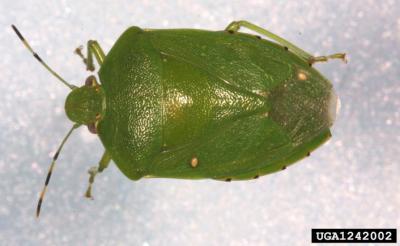Stink bugs have been consistently ranked among the most damaging insect pests of cotton in the southeastern United States for the past several years. Apart from the feeding damage, stink bugs are capable of transmitting cotton seed and boll-rotting bacteria such as Pantoea agglomerans.
In order to find out whether cultural practices could be used to manage stink bugs -- such as adjusting the date of planting to mitigate peak pest pressure -- researchers from the University of Georgia compared cotton plots that were planted in May to other plots that were planted in June.
The results, which are published in the Journal of Economic Entomology showed that the rate of boll damage generally increased more rapidly through the bloom cycle for planting dates in June compared with May.
"Our study implies that planting cotton early in the planting window will allow growers to escape peak stink bug pressure and thereby possibly eliminate or minimally reduce the number of sprays required to manage them," the authors wrote.

Green stink bug, Acrosternum hilare (Say), is a common pest of cotton in the southeastern United States.
(Photo Credit: Russ Ottens, University of Georgia, Bugwood.org)
In 2011, mean lint yield and economic returns from May planting dates were significantly greater than June planting dates, and in 2012, lint yield and economic returns were greater in plots established in early May compared with later planting dates.
Lint yield was reduced up to 36% in 2011 in late June-planted cotton when compared with lint yield of early May-planted cotton.
The authors suggest that there are two explanations for decreased boll damage in early planted cotton. First, the earliest planted cotton started blooming in early July when there would be many other suitable stink bug hosts, both agronomic and wild, in the farmscape. Conversely, the June-planted cotton did not start blooming until mid-August when some wild hosts and agronomic hosts like corn would dry to the point of no longer being attractive to stink bugs. Thus, blooming cotton may attract a larger percentage of the stink bug population during August and September.
Second, southern green stink bugs are multivoltine and there would be time for an additional generation to develop by the time the June-planted cotton was most attractive.
Source: Entomological Society of America